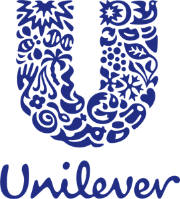How to Win Friends and Influence People - a Training Course
Master the Art of Relationship Building
Refine your communication skills by learning to harness your emotional intelligence with one of the UK's most acclaimed management training courses.
Why Choose This Training?
More Than Just A Course Of Lectures
What gets in the way of developing and holding on to new communication skills are old habits of thinking and speaking. Even if the advice is very good the reason why it rarely sticks are the mental habits people inevitably revert to, especially under pressure.
Unlearning those old habits and internalising a more effective and lasting approach to communication needs more than a short course of lectures on how to do it.
What Makes This Training Stand Out?
What makes this training stand out is the exceptional support through one-to-one coaching sessions and continuous feedback. Changing behaviour is not an easy task as old habits are hard to break.
With a 40-year track record we can help you cultivate practical skills, and build your confidence to so you can successfully navigate real-world challenges, ensuring lasting behavioural improvements.
Testimonials
Join thousands of participants getting results
"What I love about this course is that I didn't just learn about the topic, this course is about ME. I'm confident I can reliably use my new skills, even when under pressure".
![]()
"A lesson for life! The power of effective communication is incredible when one masters the skills "listening with empathy" and "speaking assertively"
![]()
Clients We Have Worked With
Well-known companies who have used this course again and again, over many years
Course Summary
Training Objectives
This course will help you foster better connections, persuade others and cultivate a constructive work atmosphere. You'll learn how to improve your communication skills, teamwork, and relationships and so that you can influence others more successfully. There'll be a particular focus on equipping you with the tools you need to provide feedback that is both constructive and supportive, and also critical yet diplomatic.
Emotional Intelligence
You will learn a set of powerful emotional intelligence communication techniques so that you can manage difficult conversations, handle challenging situations, build relationships and set firm boundaries.
Transferable Skills
The goal of this training is to equip you with the tools they need to build strong, lasting relationships in your professional life, although because these skills are so transferable many clients report vast improvements in their personal relationships as well.
Develop Skills
This is a skills development rather than just a theoretical programme, so the emphasis throughout will be on you taking turn after turn, practising your skills, while receiving feedback and coaching about your effect on others.
Repeated Practice and Feedback
In your coaching sessions you will be helped to practise dealing with the kinds of situation you find challenging, again and again, until you are confident you can do it successfully.
Video Analysis
We'll combine practical, hands-on experience with video replay and analysis and discussion of the principles involved to help you gain both skills and understanding. Special attention is paid to your individual training needs, so you can practise your skills in real-life situations that you have to handle at work.
Sustained Change
That's why as well as your place in a small group, this training includes a generous amount of private and confidential one-to-one coaching sessions online, spread over several months, ensuring an exceptional level of support. This will ensure the changes you make are sustained over a longer period of time and any obstacles are overcome. Choose between online training available worldwide, or in-person face-to-face courses in the UK.
Course Dates and Price
For a list of upcoming course dates (for online coaching and face-to-face training), the locations of the next 3-day public courses in the UK and pricing Click here.
Free Initial Session
This initial coaching session serves as an introduction to the "Skills with People" course, allowing you to understand the course's relevance and effectiveness for your specific needs before committing to it.
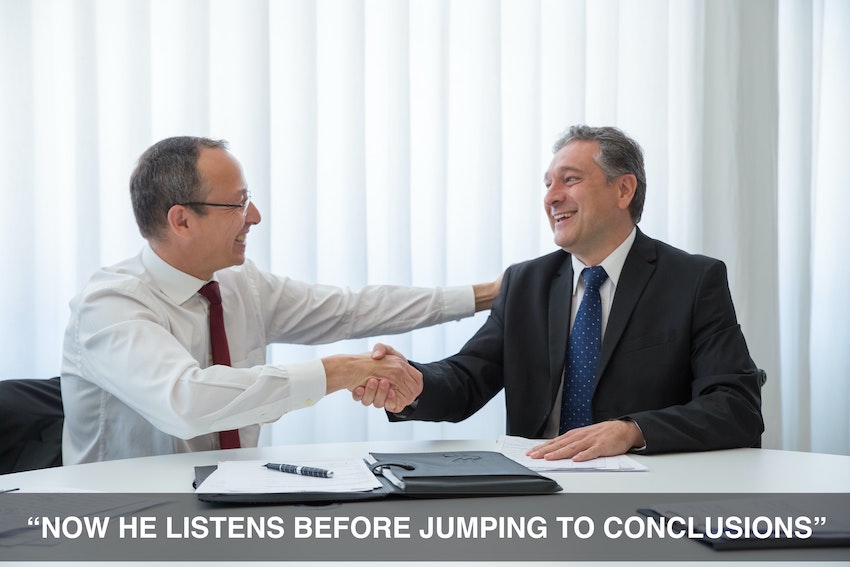
Why Is This Influencing Skills Training Course So Effective?
Winning People Over
For more than 40 years this training course on how to improve relationships has proven to be one of the most highly acclaimed. Over the years we've had thousands of managers and professionals through our hands. Many have said it's one of the best emotional intelligence training courses they ever attended. We have helped our clients develop their skills so they can communicate more effectively, and succeed in both their personal and professional lives.
This training program will give you the tools you need to succeed in relationships, influence others, and reach your goals. Whatever your ambition - better personal relationships, career advancement, or becoming a better leader - our program can help you get there.
Benefits of this Influencing Skills Course
|
Skills and Knowledge |
Benefit of this Influencing Skills Course |
|
Effective Persuasion |
Learn how to convince others by understanding their perspective using techniques like active listening and assertiveness. |
|
Emotional Intelligence |
Develop techniques for demonstrating your understanding of others. Communicate more effectively by showing empathy. |
|
Assertiveness |
Build skills to express your ideas, criticisms and opinions without causing conflict. Learn how to give your authetic, honest and sincere feedback. |
|
Practical Exercises |
This training includes real-life scenarios, role-playing, and one-on-one coaching to help you feel confident in applying what you learn in the real world. |
|
Repeated Feedback and Practice |
You'll receive lots of feedback from an experienced trainer so you can modify your technique in real time. |
Effective Persuasion
You'll learn how to persuade others by understanding and empathising with their perspective. You'll learn techniques for building trust and rapport, such as active listening, paraphrasing, summarising and showing empathy. Alongside, powerful assertive methods for helping them understand your point of view without feeling threatened.
Emotional Intelligence
You'll learn powerful emotional intelligence techniques, including how to demonstrate your understanding and appreciation for others' perspectives, and how you can encourage them to tune into your wave-length so that you are understood more easily.
Assertiveness
You will develop your assertiveness skills, which are essential for expressing your ideas and opinions effectively, without antagonising. Learn how to deliver your honest, authentic, sincere feedback without worrying about whether you'll trigger resistance, or an argument.
Practical Exercises
The training program includes practical exercises, role-playing scenarios, and a lot of one-to-one coaching to help you feel confident that you can apply what you learn in real-life situations.
Repeated Feedback and Practice
You'll receive lots of feedback from an experienced trainer using a video camera. You can then analyse the recordings, modify your technique in real time, and try again. Rince and repeat until you're confident you know what to do and how to do it to have the effect you really want to be able to have.
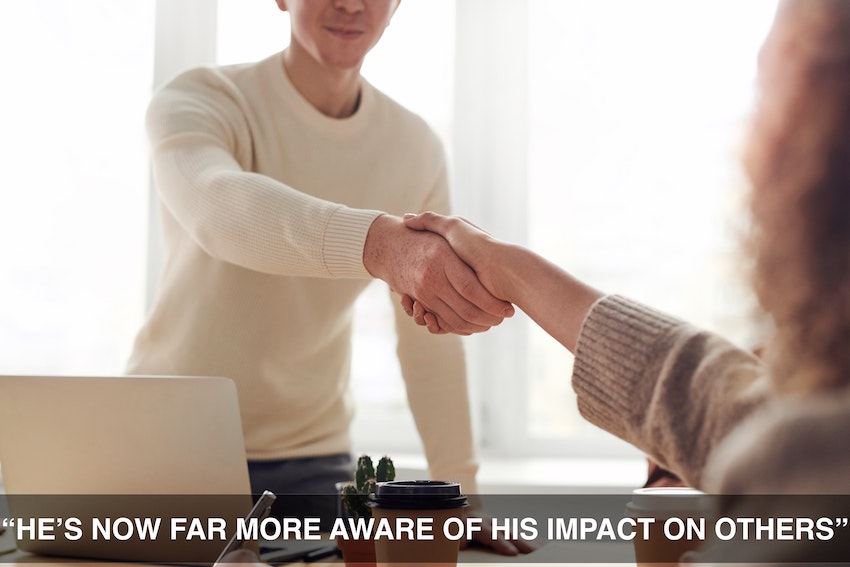
Could This Be The Right Influencing Skills Course For You?
Might your need to be more successful at winning friends and influencing people be met by this management training course called Skills with People?
Yes, if you agree with any of the following;-
- A huge part of my job is to influence people and win their agreement to go along with me.
- It's is easy so long as they don't resist, but the trouble is they frequently do.
- That's when I get into arguments, even though experience tells me that arguing isn't a very successful way to win friends and influence people.
- I just don't know any other way.
- Other reasons why you might benefit from this training in how to win friends and influence people
- Your ability to influence people is crucial to your success, but you've never had any training in basic influencing skills, nor in how to increase your influence.
- People seem very attached to their ideas and familiar ways of doing things. They resist new ideas and change. You need to know how to make them more receptive to change and more open to new ideas. You need to know how to change their minds.
- The trouble is you tend to get it arguments with people, and that doesn't seem to be a very successful way of changing their minds.
- Arguments happen when people resist new ideas and change. You need to know how to win them over without getting into argument.
- What you'll take away from this course
- You'll have the understanding, skills and confidence to be more successful at winning friends and influencing people without argument. When people are resisting your persuasion how you listen to them matters more than what you tell them. We'll help you listen more effectively.
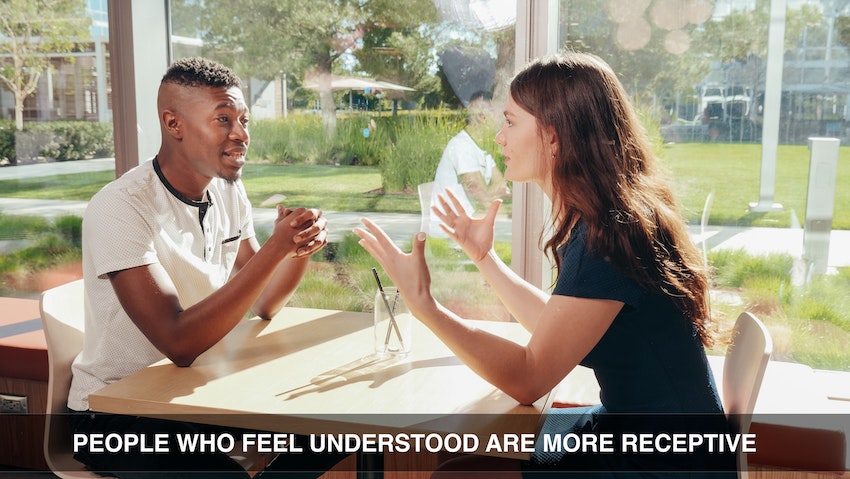
Guidelines On How To Make Friends And Influence People Without Argument
In the guidelines below, the process of persuasion - or winning friends and influencing people without argument - is broken down into two stages, the first is working towards mutual understanding, and the second is working towards agreement. It often works better to keep them separate - delay trying to get agreement until you have achieved mutual understanding:-
Stage one - towards mutual understanding
- Begin assertively by telling the truth about what you want, e.g., “I want to persuade you to change your mind about …”.
- Pause, expecting, allowing and encouraging him to put up resistance and raise objections.
- Listen with empathy until he's satisfied you've understood his concern and are taking it seriously. Be patient, allowing him to say all he wants to say.
- Be assertive again, honestly telling the truth about your concern about the risk of not doing what you want. Use pauses so that what you say can sink in.
Stage two - towards agreement
- Finally, having achieved mutual understanding, summarise both concerns, and ask him to join you in looking for an agreement that satisfies you both.
Throughout the conversation be alert for changes in his state of mind. Be flexible. Respond to his changing state of mind by switching as needed from empathy to assertiveness and back again. Don't be in a hurry to reach agreement. Impatience to reach agreement is one of the biggest obstacles to making friends and influencing people. Agreement is for stage two - it's unlikely to be achieved before mutual understanding.
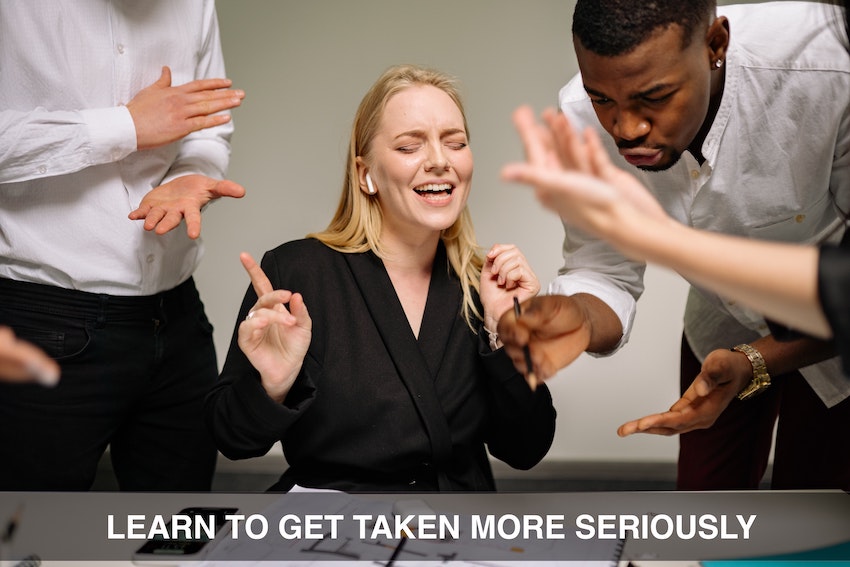
A Practical Example Of Successful Influencing Skills
How to be more successful at influencing other people
The heart of the matter - the key to persuasion
The key to opening people's minds is in how you handle their resistance. Resistance is driven by emotion - when people's negative feelings are aroused it's hard for them to be open-minded. When presented with facts and logic it's natural and inevitable they'll argue. And they'll remain closed minded until they've let off steam. That's why reasoned argument so often fails to win friends and influence people.
Here's an outline of a conversation. Person A needs something from Person B. B is resisting. You can see what happens when A tries to persuade with reasoned argument. The two minds are drifting apart, losing connection - and A fails in his attempt to influence B:-
- A: I want you to ...
- B: I can't because ...
- A: Yes, but ...
- B: I know, but ...
- A: Yes, but ...
- B: (digs his heels in and remains un-persuaded)
- A: (not getting anywhere, gives up)
Notice the “yes buts”. Listen in to almost any meeting or discussion where controversial issues are being discussed, and you'll hear people saying “yes but” to one-another (or similar words). It's an argument. As they argue their frustration rises and they end up in a ‘dialogue of the deaf'. This approach to persuasion rarely succeeds.
Below, in contrast, A responds to B's resistance with empathy and assertiveness (the two skills that are crucial for making friends and influencing people without argument). These are the two basic communication skills this course will help you master:-
- A: (Listens with empathy instead of saying 'yes but') I get the impression your concern is ...
- B: (Spontaneously lets off steam) Exactly!
- A: (Speaks assertively) What's worrying me is ...
- B: (Becoming more receptive) Mmm. I see what you mean.
This is much more persuasive. And it avoids argument. Argument raises the temperature, wastes time and jeopardises the relationship. Of course there may still be work to do before B fully agrees, but A has greatly increased his likelihood of success. He has responded to B's resistance not by arguing but by showing understanding and allowing him to let off steam and calm down. This has created a rational atmosphere of mutual respect and understanding.
If you find yourself arguing, stop. You're much more likely to win friends and influence people by using empathy and assertiveness instead of argument.
Example of how not to do it
Here's Nicola, a member of the customer support team. She's trying to influence Hugo, manager of the software development department, in order to get the technical assistance her customer urgently needs:-
- NICOLA: Hi, Hugo. I've got a customer with a software problem. We need to get it fixed as soon as possible.
- HUGO: I'm afraid he'll just have to wait.
- NICOLA: But he says he can't wait.
- HUGO: I dare say. But I've no programmers free right now.
- NICOLA: Can't you release someone? Its urgent.
- HUGO: Sorry. Every customer says his need is urgent.
- NICOLA: Yes, but how am I supposed to keep the customer happy if I can't get him the service he needs when he needs it?
- HUGO: I don't know. My people can't be everywhere at once. They're fully stretched.
- NICOLA: Maybe, but what am I going to tell the customer? He's not going to like it!
- HUGO: You're not the only one with pressures!
Both Nicola and Hugo are doing the best they can, and with the best of intentions. But an unresolved stalemate like this does not bode well for the business. Let's see what difference it makes when Nicola uses a combination of empathy and assertiveness:-
Example of how to do it
- NICOLA (assertive with empathy): Hi, Hugo. I need to talk to you. I'm afraid I'm bringing you another headache.
- HUGO (likes her frankness): So what's new? Come in, Nicola. What can I do for you?
- NICOLA (assertive): My worry is that one of our major customers has a problem with the software. And things are going to get very difficult if we delay fixing it.
- HUGO (feels he, too, can be frank): Hmm. The trouble is, half my programmers are already tied up with customers, and the other half are committed to new software development.
- NICOLA (empathy): I can see it's a very difficult balance you have to strike.
- HUGO (her empathy wins his trust, and he lets off steam): Too damned right.
- NICOLA (more empathy): And now I'm adding to the pressure.
- HUGO (now in response to her empathy he starts to soften and see things from her point of view): True, but I can see you're only trying to do your job.
- NICOLA (assertive): What alarms me is that this customer carries a lot of weight in the business community. It could damage our reputation, and that would be hard for us to recover from.
- HUGO (she has almost brought him round, but he still puts up token resistance): They all say it's urgent. You don't think he's just trying it on?
- NICOLA (firm and assertive): It's losing him revenue as we speak. I'm worried it'll hurt us in the long run if we delay.
- HUGO: Okay, you've got yourself a programmer.
- NICOLA: I appreciate it, Hugo. I'll keep you in the picture about the customer's feedback when the job's done.
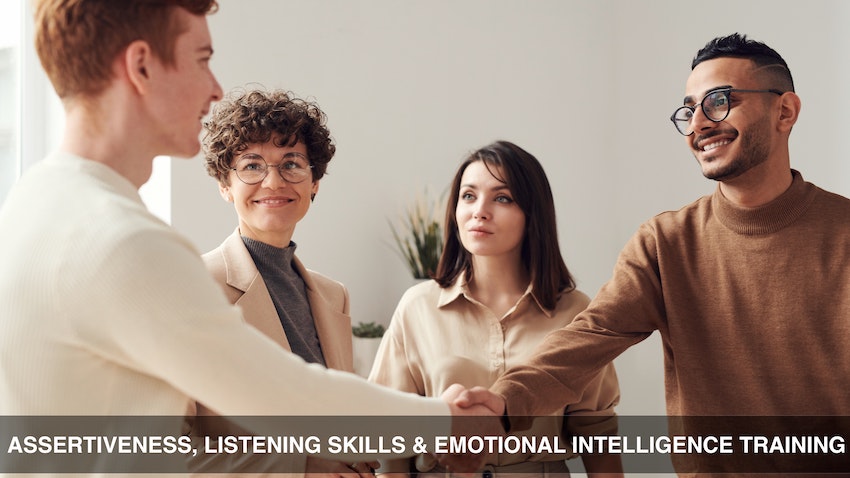
Additional Resources
- Contact us for a chat and we'll be glad to discuss what challenges you may be experiencing, and if and how we can help you be more successful at winning friends and influencing people.
- Every participant begins this course with a free exploratory one-to-one coaching session by phone or Skype. You make no commitment to proceed beyond this until you're sure this course can help you be more successful at winning friends and influencing people.
- You'll find under FAQs (in the main menu above) answers to many of your questions about the content and method of this course.
- For further information on this website relevant to winning friends and influencing people you might also find our page in influencing and persuasion and emotional intelligence training relevant and helpful.



















